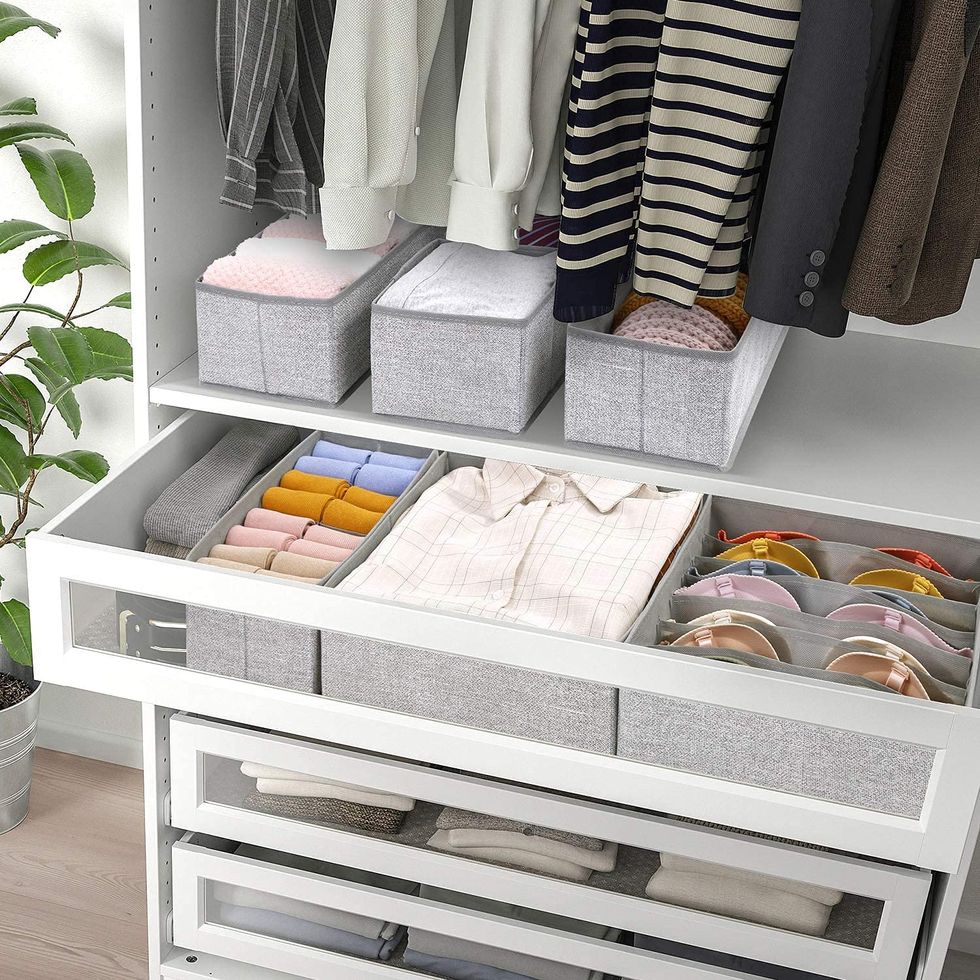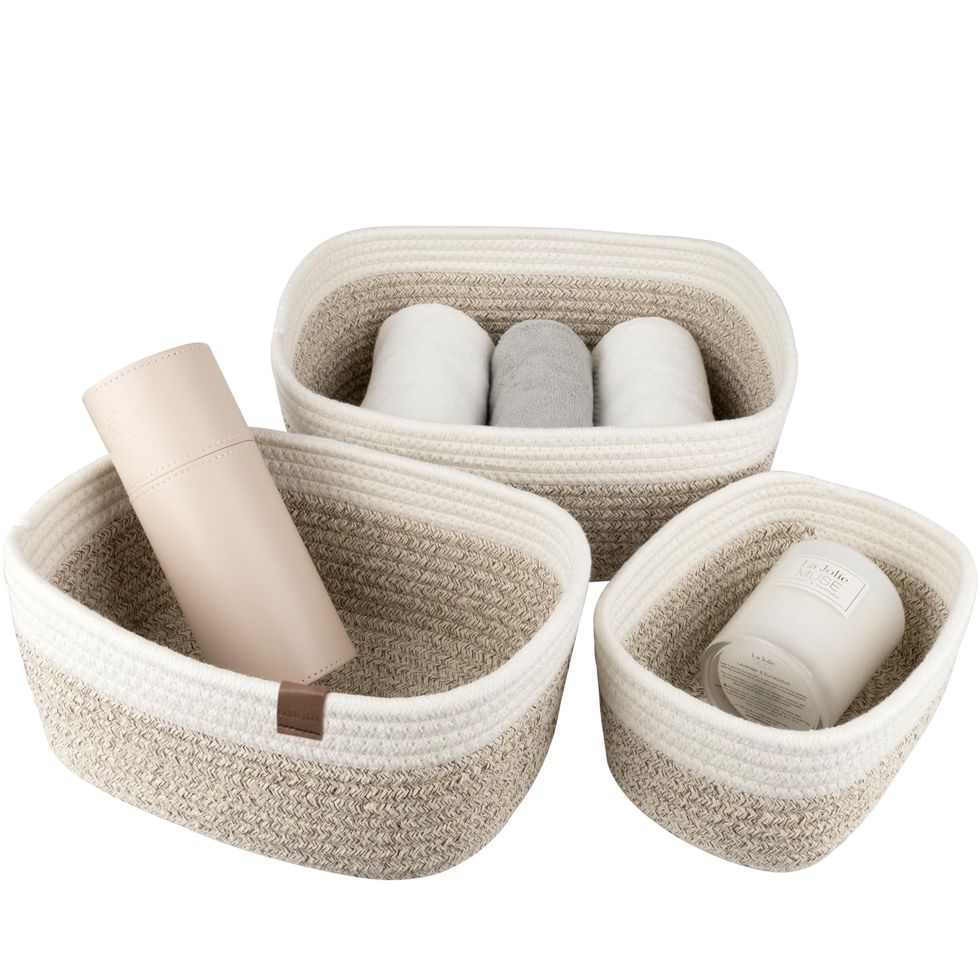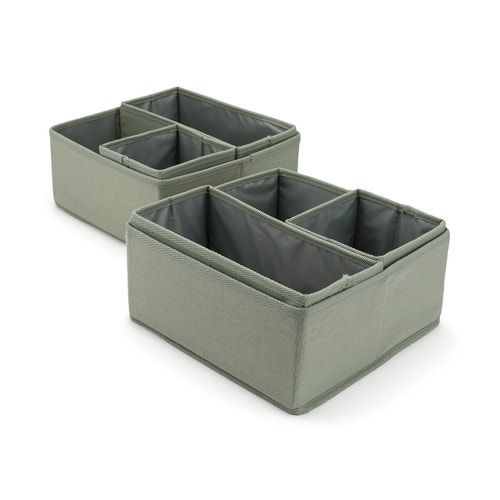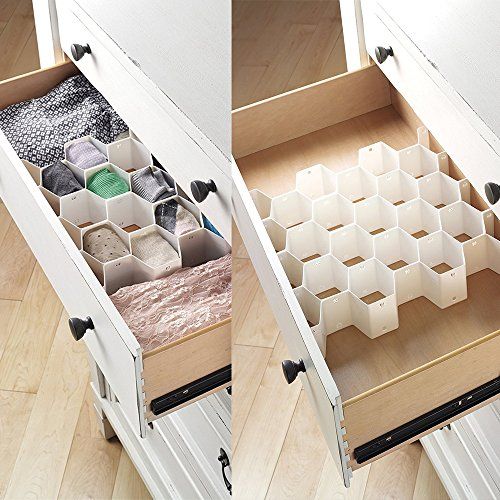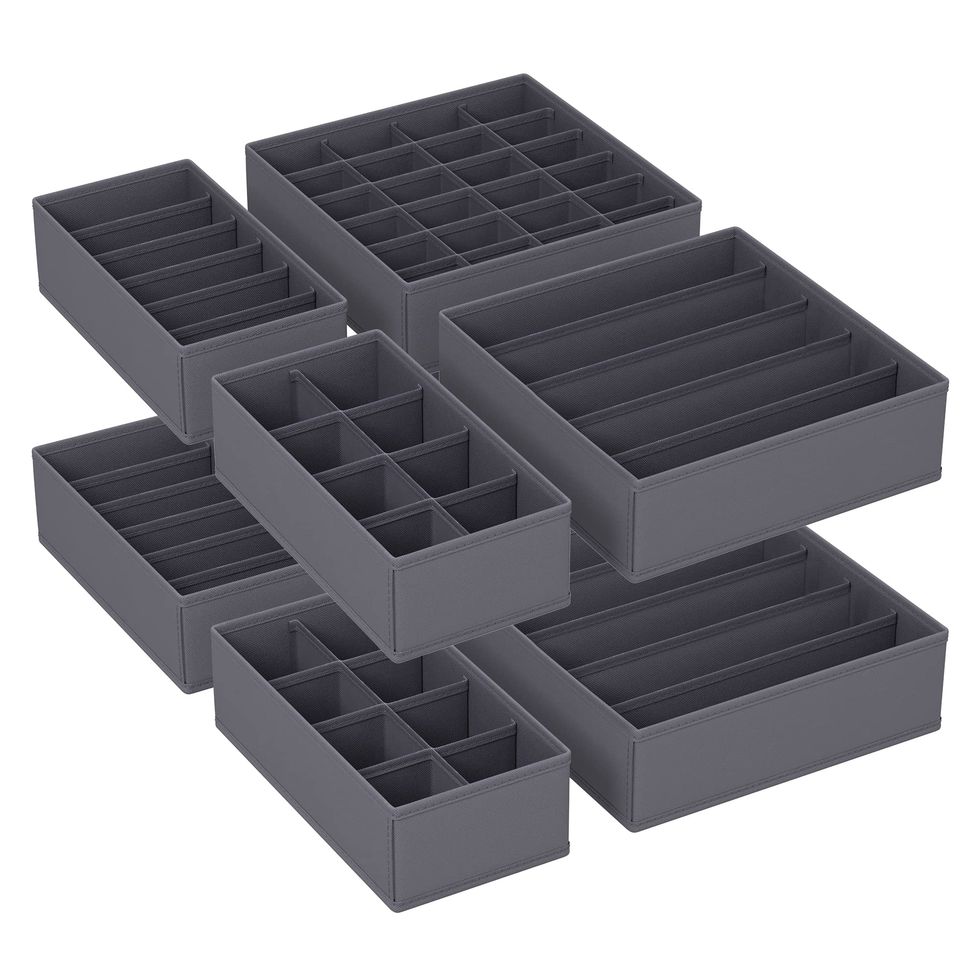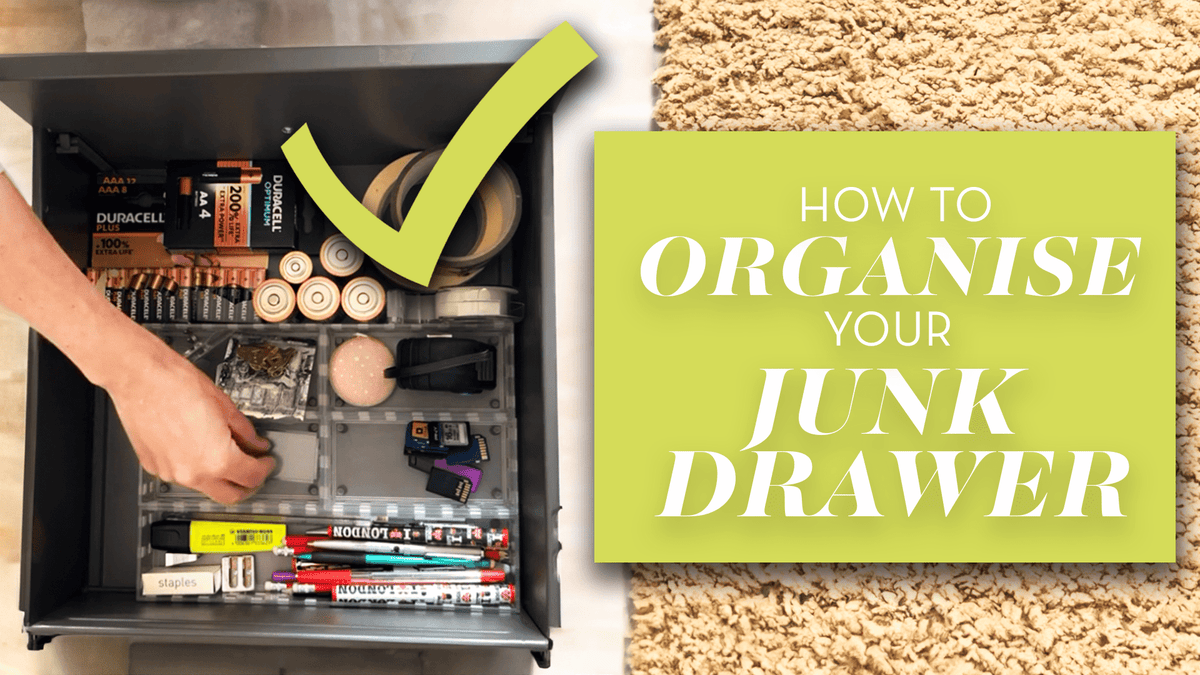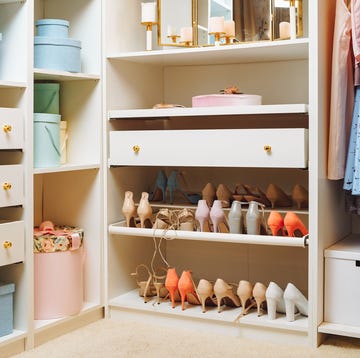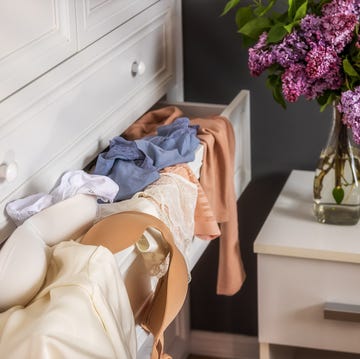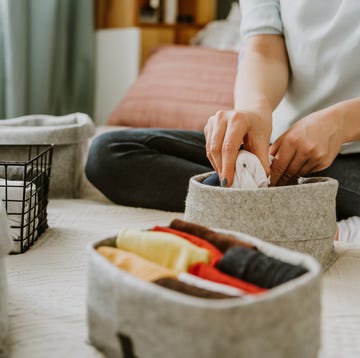Bedroom drawers are often stuffed to the brim with clothes. Before you know it, you’re cramming and slamming to get the drawers shut, then poking in whatever’s overflowing by hand. ‘Problem solved’ you think, until the time comes to open the drawers again and everything springs out.
Decluttering the wardrobe is a top priority for many, but the chest of drawers generally goes forgotten about. If this space is overloaded, your clothes will be creased and potentially damaged as you force the drawer to shut. You’re also unlikely to wear everything in there, or at least you will make a mess as you forage through for what you need!
If you’re looking to make some space in these drawers, we’ve found 7 things you can declutter now to get you started – so getting dressed in the mornings won’t be such a mission!
1. Pants and socks with holes
It’s nothing to be embarrassed about! With daily wear, our pants, socks and tights can soon wear through, leaving unsightly ladders and holes behind.
You’re not likely to wear these again, so they’re a quick and easy item to remove. But, rather than throwing them in the bin, wash and then recycle them at your nearest textiles recycling point (you can find this on recyclenow.com).
If one sock is still in good shape, or there are odd socks in your drawers that you don’t want to mix and match, you can always reuse them by pulling one over your hand and using it as a dust-grabber for awkward spaces, such as houseplants.
The foot of your old tights can also be cut away (cut at the knee) and pulled over the hand for an anti-static duster – great for reaching between the slats on blinds and lampshades. Old tights are also brilliant for holding over the end of a vacuum nozzle to collect loose change down the sofa.
2. Crushed bras
With our pants and socks stacking up, bras can end up crushed alongside. The padding will be flattened and misshapen, with the straps and band potentially caught and damaged in the opening of the drawer. The material can be pulled, too, leaving a baggy appearance when worn. Ultimately, it’s not good news for your bra; such storage can even impair the support!
Only keep your bras in the chest of drawers if you have sufficient space for them and a dedicated compartment or organiser to keep them separated, such as AiQlnu Bra Storage Boxes.
Otherwise, it’s better to remove them completely and find space for them in your wardrobe instead. Hanging storage options exist, such as the MaoXinTek Hanging Storage Organiser and GmeDhc Wooden Bra Hangers. Alternatively, you can put each bra on a dedicated hanger and have the cups sitting in each other on the rail. Your bras will look much better and last much longer for it.
GHI Tip: Handwash your bras with a delicate detergent if you can, to help them last. If you’re determined to use the washing machine, use a mesh laundry bag to make the cycle less abrasive.
3. Loose belts and ties
When left unravelled and loose in your drawers, belts and ties can take over the space. As you pull one free, it pulls everything else out with it – making a jumbled mess.
Keeping them rolled is one solution, but it’s not always the answer. While it’s fine for fabric belts, if you roll a leather belt, the leather will be bent, distorted and eventually start to crack, particularly at the notched end. Plus, unless secured, rolled ties and belts can quickly unravel again, putting you back at square one. So what’s the answer?
Your ties can be hung in the wardrobe, which helps to keep them free of wrinkles and creasing – although knitted ties can stretch, so keep on rolling these. An item such as Mkono Wooden Tie Rack can be used to hang both ties and belts. Hooks are also popular for belts.
Alternatively, if you prefer to keep things rolled, you can invest in compartments for both ties and belts to fit in your drawers and keep them secured.
4. Knitwear
Now that we’re into the warmer months, it’s time to make the switch from your winter to summer wardrobe, if you haven’t already. It can save you a world of space by removing the items you’re not going to wear over the next few months, particularly if you’re storing bulky jumpers and thick slipper socks.
These items are often made of natural fibres, such as wool and cashmere, so you will need to store them securely to avoid moths. Use a dedicated storage bag that’s breathable to keep the item(s) smelling fresh. And store them out of the way, where you can easily get to them when the time comes.
While summer clothes don’t take up so much space, remember to switch back later in the year. If the items aren’t being worn, there’s no point storing them alongside your everyday wardrobe.
5. Novelty T-shirts
This point isn’t applicable to every set of drawers. It depends on whether you’re regularly wearing the items or not!
Novelty T-shirts are picked up from all kinds of events and places as a kind of souvenir. You often get them from concerts, shows, festivals and holiday destinations. Generally speaking, these items go unworn, but at the same time, we can’t bring ourselves to declutter them because of the memories they hold. You’re essentially dealing with sentimental clothing here, and sentimental items are some of the hardest to declutter.
Of course, you don’t need to declutter these items if you still value them, but they should really be moved to a space where they’re less likely to be creased and damaged if that’s the case. If, however, you have an abundance of novelty T-shirts and want to remove some of the excess, ask yourself when, if ever, you last wore the item. You can also ask yourself if you have other (more important) souvenirs to mark the event, such as photos. Finally, consider if you even remembered having the item before stumbling upon it. These questions can all help to let go.
If you’re wearing these T-shirts, they’re serving a purpose so you can skip this point!
6. Silks and linens
Silk and linen creases easily, so these ‘floaty’ types of material should really be removed from your drawers and hung in the wardrobe instead. Use velvet hangers to prevent them from slipping on to the floor. A garment steamer can quickly remove any creases when required.
GHI Tip: Silk can easily take damage from what it’s stored alongside, so keep it away from open zips.
7. Anything you’ve not worn in a year
If you come across shirts or jeans that you can’t remember when you last wore, or they just don’t fit anymore, you should declutter them. If you’re not wearing it, it’s just taking up valuable space in your drawers and limiting the space for the things that you do wear. And keeping items that no longer fit in the hope that they will one day can be demoralising.
If you struggle to let item(s) go, it can help to consider whether someone else could get more use out of it. Ask yourself: could this skirt have another life with someone else, versus being wedged in my drawers?
If you’ve found something that you’ve forgotten about and you’re determined that you’ll wear it again, be sure to revisit the item later to check you’ve made good on your promise to yourself. If you’ve found a few items you’ve forgotten about, your drawers need a new system to make everything more visible and easy to access. Drawer dividers can help to keep items stacked in their dedicated piles, while compartments can help to keep categories of items divided; some can allow you to stack items vertically so you can see everything better.




